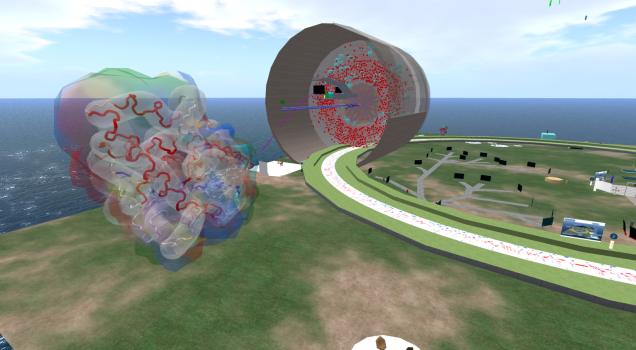Over the past few years, education—from the elementary to the post-secondary level—has started to put much greater emphasis on the STEM fields, that is, science, technology, engineering, and mathematics.
The reason for this is the growing recognition of the importance of STEM in modern digital society, and the predicted increase in demand for STEM workers in the future. Given the need for both more and better STEM education across the board, it is arguably here where virtual reality technologies can have the greatest benefits in education.
On this blog last September, Kate Abrosimova identified five ways virtual reality will change education. Here we explore three examples of how virtual reality are being used to improve STEM education in particular.
1. VRÂ allows online students to do experiments
Education on all levels is moving rapidly into the digital sphere. Because of its accessibility and scalability, online education is becoming the norm—even students taking traditional face-to-face courses are now doing a good chunk of their coursework online.
While online education has a variety of advantages, in science education it is still seen as inferior because science is such a hands-on endeavor. How can you learn chemistry without actually doing chemistry experiments? What happens to the junior high rite of passage that is dissecting a frog?
Virtual reality is the answer. The possibilities for hands-on science experiments range from online simulations, such the virtual science labs from labOnLaptop and materialworlds, to immersive science labs using Oculus Rift.
Second Life is also being used for virtual lab experiments—Oddprofessor’s Science Center is a virtual physics lab that was created for students at the Rochester Institute of Technology’s National Technical Institute for the Deaf.
These technologies can level the playing field between online and in-person formats, meaning that more students around the world can have access to the high-quality science education they need today.
2. Medical students can gain surgical experience
Virtual reality has the potential to transform medical education in many ways. Last year, the Moveo Foundation used a Go-Pro to develop a training program that lets medical students get a first-hand look at surgery from the doctor’s perspective.
Using an Oculus Rift headset, a student can virtually become a surgeon, be virtually in the operating theater and feel themselves in the shoes of the surgeon.
Virtual reality is also being used by medical students to practice procedures like drawing blood and surgical techniques before attempting them on a human being.
3. VR allows students to understand the human body
Virtual tours of the human body allow anatomy and physiology students to gain a close-up understanding of the human body.
For example, the Biodigital Human is an interactive 3D body developed by NYU that can be used by medical students as a sort of virtual cadaver. By adding 3D glasses and iPads, students can also use the simulation as a supplement while performing actual dissections.
Sally Frankel, the anatomy course director at NYU said, “It lets the student focus on exactly what it is they need to learn, and it’s a terrific supplement to having the cadaver in front of you.â€
Second Life’s Genome Island is another example of how VR can be used to better understand the human body. This land is a rotating plasma membrane where students can become immersed in microbiology. OpenSim’s BioZone is a place students can study pathology, specifically tuberculosis.

Immersive virtual reality for education is still in its infancy, but interest—and investment—is in the technology is growing. Over the next several years, as our education systems continue to focus on expanding and improving STEM education, we can expect to see many more groundbreaking projects that have virtual reality at their core.
- 3 ways VR helps science education - April 27, 2015
